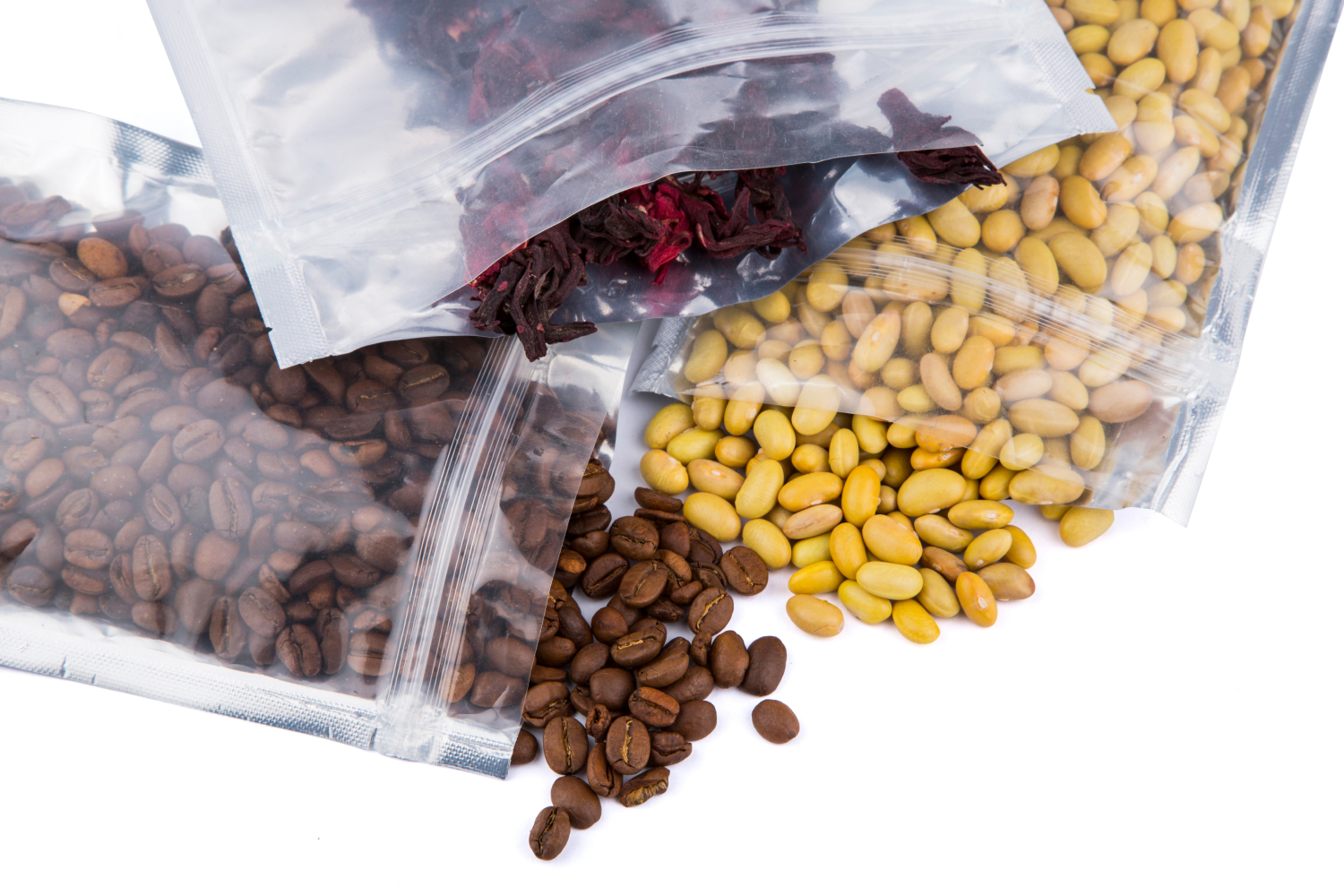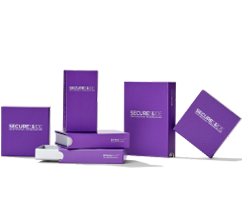
Mylar Food Storage Bags: Which Foods Work Best
Mylar was a well-kept secret for years, known for oddities like space blankets and celebratory balloons. However, this material’s strength and barrier properties couldn’t be kept under wraps for long.
Now, food manufacturers have embraced Mylar as a form of flexible packaging, changing the look and feel of many consumer goods forever.
What does Mylar packaging offer that traditional rigid formats and other thermoplastics do not? Which foods are best suited for Mylar packaging, and how do they benefit from its unique properties?
Let’s answer all these questions and more as we examine the role of Mylar storage bags in today’s fast-changing packaged food industry.
Why Is Mylar Great for Food Storage?
Marketed initially as BOPET (biaxially oriented polyethylene terephthalate), the material now known as Mylar has been around since the 1950s.
Praised for its chemical stability and strong barrier properties, Mylar showed potential early on but didn’t see broad adoption in the packaged food industry until decades later.
Mylar’s long-term food storage comeback started in the niche prepper community, where people keep large quantities of consumable goods for preparedness in an emergency or economic downturn.
Preppers soon found that Mylar gave them all the benefits of standard thermoplastics with even better shelf life, accessibility, and durability.
It wasn’t long before packaged food brands caught the prepping trend and put Mylar food storage bags to work for their products. Here’s a closer look at this material’s unique benefits and why many brands are hopping on the Mylar bag bandwagon.
Outstanding Strength and Protection
The power of Mylar is found in its stretched chemical composition, making it far more durable than standard thermoplastic varieties.
At first touch, you can feel that Mylar is noticeably more difficult to tear or puncture, even with considerable force. Still, the material is fully flexible and lightweight, allowing it to be easily transported, stored, and accessed.
In terms of barrier properties, Mylar excels in nearly every essential category. Mylar offers stellar oxidation resistance in its basic form, especially when a heat seal is applied in conjunction with oxygen removal methods.
Oxidation is a hidden cause of degradation in many rigid and flexible storage formats, and Mylar takes it almost entirely out of the equation. Additionally, Mylar can protect contents from extreme heat and cold with comparatively strong moisture protection.
Side-by-side comparisons to standard plastic wraps and trays reveal the real strength of Mylar, and food packagers seem to have woken up to the trend.
Easy To Seal and Label
In the prepping world, seals and labels are part of the game. These steps are vital in ensuring the proper protection of food-grade contents in Mylar storage bags and storing and sorting these containers for long-term organization.
Food-safe packaging brands have adopted these processes in a more elaborate and systematized way, with Mylar offering safe and speedy results in both regards. Mylar bags can be sealed with heat sealer machinery, ensuring even and effective seals at scale.
While a handheld impulse sealer or heating iron can be used for at-home prepping, industrial heat sealers offer more power, consistency, and speed.
Additionally, while vacuum sealing is widespread, heat-sealable gallon mylar bags can offer better preservation than vacuum sealer options. Mylar is also easy to print on, with plenty of space and customization options for the next generation of food brands.
Versatile Shapes and Sizes
While preppers are known for storing dry goods in 5-gallon buckets and massive Mylar storage bags, the typical commercial food producer has a wide range of product formats and offerings.
With packaging supply experts like Dymapak leading the charge, Mylar bags are more versatile and varied than ever. Brands can size their exit bags and stand-up pouches with exact dimensions and specifications, ensuring the perfect fit for any product format or food type.
Rigid containers only have so many configurations before they defy the laws of physics or become untenable in storage. With Mylar, virtually any size and shape is available with the right planning and execution.
Extended Storage Times
Every extra week or month of storage makes a difference in the packaged food industry, where margins are slim and expiration dates loom large. The prepping community has highlighted the storage longevity of Mylar for years, and food brands are finally learning the lesson.
This isn’t to say that food can last forever when stored in Mylar. Still, that extended storage time can mean the difference between a successful or struggling brand in today’s competitive economy.
Extra Features and Safety Measures
Mylar is more than just a strong and safe material in itself. Packaging suppliers can add numerous extra features to custom Mylar bags, providing even more value for food brands seeking an industry edge.
Child-resistant mechanisms are an excellent example of professional-grade safety protections in consumer goods that can’t be achieved through traditional zip-lock methods.
Dymapak’s lab-certified child-proof Mylar bags are the first of their kind, bringing peace of mind and assurance to packaged foods and pharmaceuticals.
Which Foods Work Best in Mylar Bags?
Mylar is a powerhouse for food storage, protection, and longevity. But what foods are best suited for storage in Mylar, and what sort of shelf life can brands reasonably expect from these formats?
Let’s check out the main categories of food products in Mylar storage and how long they tend to last.
Salt and Sugar
Household staples like salt, sugar, and baking soda can be stored indefinitely in a well-sealed Mylar bag. These ingredients are low in moisture and fat, making them ideal for long-term storage and extended shelf life.
Food brands specializing in high-quality sea salt, spice mixes, or sugars will be pleased to discover that Mylar offers a good balance of barrier properties and a great user experience. Specific spice blends may be slightly less suited for extended storage if they contain higher moisture levels, but Mylar is above the rest regarding protection and resistance.
Grains, Cereals, and Legumes
Our world runs on grains, and Mylar bags offer a reliable way to store these food products safely for the long haul. Rice and pasta are everyday favorites across the global economy, while ancient grains like bulgur and quinoa have become more popular with the health food crowd.
In the legume category, dried beans like kidney and lima varietals can last up to 20 years with the proper storage, and other grains can stay safe even longer.
Adding oxygen absorbers can help keep grains fresh for over two decades, a massive benefit for businesses and buyers alike.
The more flavorful the grains, the shorter the shelf life. White and whole wheat flour last five to ten years in thick Mylar, along with steel-cut oats and cocoa powder. Still, this is an exceptional upgrade from the typical expiration dates of these beloved ingredients.
Tea, Coffee, and Powdered Drinks
Some food products are meant to be mixed into a beverage format, providing extra flavor and nutrition to those prioritizing shelf-life and mobility.
Tea and instant coffee are great examples of foods that thrive in Mylar, benefiting from smell-proof seals and substantial oxidation barriers of the material.
The rise of products like sports drink mixes and electrolyte powder is another notable use case for Mylar, helping shoppers avoid reliance on plastic bottles.
This category also includes powdered baby formula, for which smaller travel pouches are ideal for parents and caretakers on the go.
These mixes can last ten years or more with suitable materials and storage methods.
Nuts, Chips, and Dried Meat
Snack food favorites like mixed nuts, fruits, potato chips, and jerky are some of the most popular Mylar packaged items on the market. However, the shelf life of these goods might be shorter on average, ranging between one and five years.
But considering that most perishable goods only last a few weeks at most, the effectiveness of Mylar can’t be discounted. As oxygen removal methods improve and Mylar becomes more widely adopted, expect to see shelf life averages increase among your favorite snacks and mixes.
Freeze-dried produce and other emergency foods are becoming more common dry foods that people pack mylar bags with.
And the foodsaver bags favored by freeze dryers and other preppers, increasingly, are made out of mylar. The resealable mylar is more reusable than standard plastic bags or aluminum foil and offers more puncture resistance than standard ziplock bags.
Specialty Candies and Chocolates
Mylar is usually associated with long-term storage of nutrition essentials, but there’s plenty of opportunity for premium, specialty food items here as well.
Candy and chocolate makers find that Mylar storage is ideal for preserving the flavors and freshness of their artisan products. At the same time, the branding and customization options are the cherry on top.
Cannabis edibles have also found a home in Mylar storage bags, as a new wave of manufacturers takes advantage of the material’s strength and smell-proof capabilities.
Mylar bags, combining child-resistant features and long-term storage potential, are leading the way in specialty foods worldwide.
Give Your Next Product the Magic of Mylar
Mylar bags give food brands everything they’ve been waiting for.
With durable material, premium look and feel, and child-resistant features readily available, it’s no wonder why Mylar bags are here to stay.
If your food products need a new approach to packaging, Dymapak is here to get you up to date with Mylar solutions that get the job done right.
Sources:
Trends in Food Packaging | Michigan State University
Types of Plastic Food Packaging and Safety | Chemical Safety Facts


